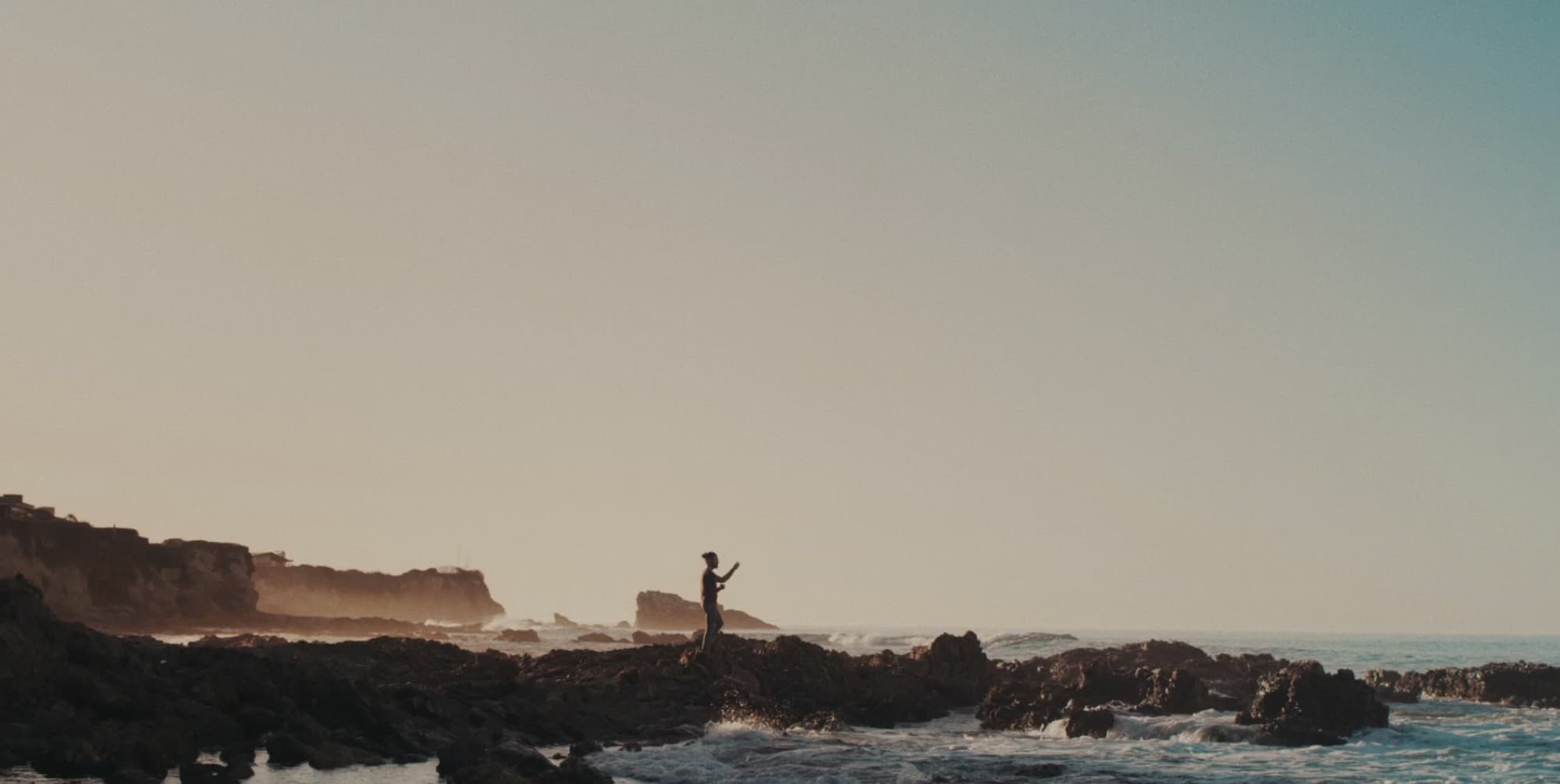Meet Photographer Andrew Oxenham
Hi, I’m Andrew Oxenham, though most everyone calls me Ox. As a photographer, it's important to see the light around you, which requires your peripheral vision. With glasses, you sort of learn to avoid those areas your eyes only look straight through the glasses which makes seeing the light around you really difficult. With Visian ICL I don't have to think twice about any of those things.
Hi, I’m Andrew Oxenham, though most everyone calls me Ox. As a photographer, it's important to see the light around you, which requires your peripheral vision. With glasses, you sort of learn to avoid those areas your eyes only look straight through the glasses which makes seeing the light around you really difficult. With Visian ICL I don't have to think twice about any of those things.

What led me to Visian ICL
Growing up, I considered other eye procedures, but had a lot of skepticism specifically from the fact that they're non-reversible. And so that was actually the biggest and the kind of main selling point for me on Visian ICL. One of the [other] things that made me feel pretty comfortable about getting Visian ICL is that it's a tried and true method.

Ox's day-to-day & where Visian ICL helps most.
Through the lens
Planning it out
“There’s a few big road blocks to having glasses and being a photographer. Now I’ve got Visian ICL and I can run out and live my life unhindered.”
There’s a few big roadblocks to having glasses and being a photographer.
When you can’t see your entire field of vision you’ve got a whole bunch of space to your left and to your right, specifically your peripheral vision, that you sort of learn to avoid those areas your eyes only look straight through the glasses, so that kind of light part of it is really difficult.
Thinking about life with glasses, my life had a whole bunch of tiny little hurdles. Things that I jumped over, granted. But it was basically [how] I lived my life... I made my life conform to these constraints that I had. And now I’ve got the Visian ICL and I don’t have to think twice about any of those things. I can grab my camera or grab my notebook and just run out and live my life unhindered.

Questions with Andrew
What do you do for a living?
I am a photographer who creates what I like to call visual puns, where I take ordinary items and apply them in unexpected ways.
What’s your biggest pain point about contacts or glasses?
With glasses, you still can’t access your peripheral vision clearly, which accounts for a lot of your field of vision.
What about Visian ICL helped make your decision?
One of the things that made me feel pretty comfortable about getting the Visian ICL is the fact that it's actually been around for a lot longer and that actually helped me see that it’s a tried and true method.
Important Safety Information
The EVO/EVO+ ICLs are indicated for patients who are 21 to 60 years of age and are available in spherical powers ranging from -3.0 D to -18.0 D for the correction/reduction of myopia with or without a cylinder power range from 1.0 D to 6.0 D. The hyperopic ICLs are indicated for patients who are 21 to 45 years of age and are available in powers ranging from +3.0 D to +10.0 D for the correction/reduction of hyperopia. In order to be sure that your surgeon will use an ICL with the most adequate power for your eye, your nearsightedness, farsightedness and astigmatism should be stable for at least a year before undergoing eye surgery. ICL surgery may improve your vision without eyeglasses or contact lenses. ICL surgery does not eliminate the need for reading glasses, even if you have never worn them before. ICL represents an alternative to other refractive surgeries including, laser assisted in situ keratomileusis (LASIK), photorefractive keratectomy (PRK), incisional surgeries, or other means to correct your vision such as contact lenses and eye glasses. Implantation of an ICL is a surgical procedure, and as such, carries potentially serious risks. The following represent potential complications/ adverse reactions reported in conjunction with refractive surgery in general: additional surgeries, cataract formation, loss of best corrected vision, raised pressure inside the eye, loss of cells on the innermost surface of the cornea, conjunctiva I irritation, acute corneal swelling, persistent corneal swelling, endophthalmitis (total eye infection), significant glare and/or halos around lights, hyphaema (blood in the eye), hypopyon (pus in the eye), eye infection, ICL dislocation, macular oedema, non-reactive pupil, pupillary block glaucoma, severe inflammation of the eye, iritis, uveitis, vitreous loss and corneal transplant. Before considering ICL surgery you should have a complete eye examination and talk with your eye care professional about ICL surgery, especially the potential benefits, risks, and complications. You should discuss the time needed for healing after surgery.
Select Your Region
Latin America
References
1. Patient Survey, STAAR Surgical ICL Data Registry, 2018
2. Sanders D. Vukich JA. Comparison of implantable collamer lens (ICL) and laser-assisted in situ keratomileusis (LASIK) for Low Myopia. Cornea. 2006 Dec; 25(10):1139-46. Patient Survey, STAAR Surgical ICL Data Registry, 2018
3. Naves, J.S. Carracedo, G. Cacho-Babillo, I. Diadenosine Nucleotid Measurements as Dry-Eye Score in Patients After LASIK and ICL Surgery. Presented at American Society of Cataract and Refractive Surgery (ASCRS) 2012.
4. Shoja, MR. Besharati, MR. Dry eye after LASIK for myopia: Incidence and risk factors. European Journal of Ophthalmology. 2007; 17(1): pp. 1-6.
5a. Lee, Jae Bum et al. Comparison of tear secretion and tear film instability after photorefractive keratectomy and laser in situ keratomileusis. Journal of Cataract & Refractive Surgery , Volume 26 , Issue 9 , 1326 - 1331.
5b. Parkhurst, G. Psolka, M. Kezirian, G. Phakic intraocular lens implantantion in United States military warfighters: A retrospective analysis of early clinical outcomes of the Visian ICL. J Refract Surg. 2011;27(7):473-481.


